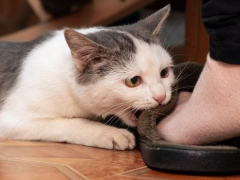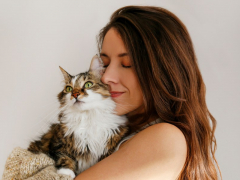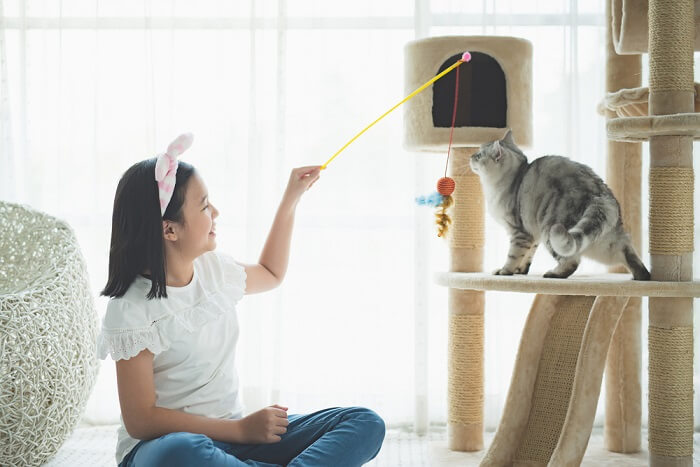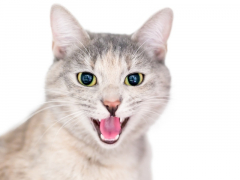
Review News / Shutterstock.com
The ancient Egyptians worshipped cats as furry gods, and Russians seem to revere felines, too. So it is no wonder that several cat breeds originate from Russia!
According to Russia Life magazine, during medieval times, cats were considered exotic animals and cost as much as an ox in Russia. Russians thought of cats as clean animals and allowed them to live in monasteries and churches to keep the food supply safe from rodents. Killing a cat came with an expensive penalty. And in modern-day St. Petersburg, the second largest city in Russia after Moscow, many cats beloved by the public live in the Winter Palace, where Catherine the Great lived.
Many cat breeds have bloodlines originating in Russia, where cats are a very popular pet and considered good luck. We explore six key breeds here, but it is worth mentioning that several other newer, lesser-known breeds come from Russia. These rare felines include the Karelian Bobtail; the Mekong Bobtail; the Neva Masquerade, which is a colorpoint version of the Siberian; and the Ussuri, an exotic-looking hybrid of a domestic cat and wild cat.
Who could say “Nyet” to making one of these beautiful Russian cat breeds a part of their family? Let’s say “Da” to these radiant Russian cat breeds that make great pets.
#1 Russian Blue

Benevolente82 / Shutterstock.com
This gorgeous steely blue-gray cat is the first one that comes to mind, as “Russian” is right in the title. The Russian Blue is a beloved breed recognized around the world. This feline’s most recognizable trait is its short, satiny, silvery blue-gray double coat with hairs that stand out from the body. Other physical traits include a graceful, athletic build, and round, bright green eyes. These cats are beautiful – or “krasivyy” in Russian!
The Russian Blue is a naturally occurring breed rather than one deliberately created by selective breeding. The first Russian Blue cats likely were born in the 19th century on Russia’s Archangel Isles. During the 1860s, some of these cats likely joined sailors headed for Great Britain and northern Europe. The first “Archangel Cat,” the unofficial name before Russian Blue, debuted in a London show in 1875, and the breed really took off. Sadly, the Russian Blue and many other breeds experienced a population collapse after World War II, but thankfully, breeders replenished this beloved feline.
The Russian Blue makes a terrific pet because they are highly intelligent and not very prone to mischief, after they outgrow the kitten phase. These cats can be aloof and reserved at first, but once you have won their hearts, Russian Blues will love spending time with you.
#2 Donskoy
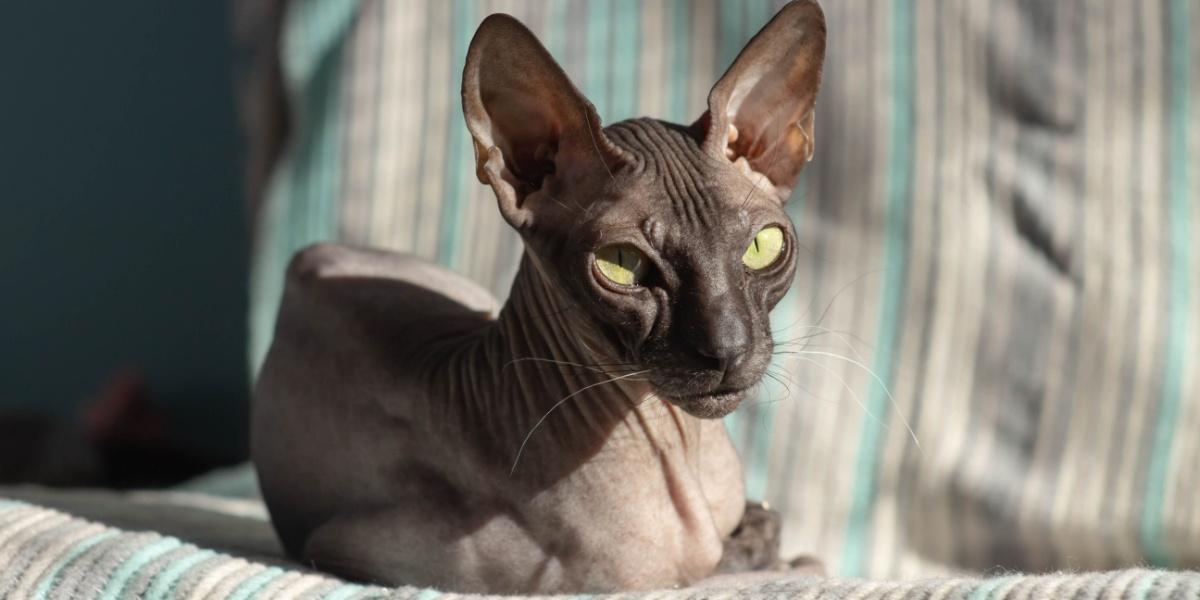
Viachaslau Herostratos / Shutterstock.com
Curiously, in a country known for brutally cold winters, one of the hairless cat breeds originated. The Donskoy, also called the Russian Hairless or Don Sphynx, dates back to the ‘80s, when a professor named Elena Kovaleva rescued a kitten that some boys were mistreating. The kitten was partially hairless and Kovaleva tried to treat the suspected skin disease, but nothing worked. The kitten, Varvara, had a litter of her own kittens, and some were hairless, which proved a genetic mutation. A professional breeder adopted one of her kittens and started the Donskoy breed.
The Donskoy, known for being cuddly and affectionate, is either completely bald or has a fine downy coat. This feline has a wedge-shaped head, large ears, and slanted, almond-shaped eyes.
#3 Peterbald

Alina Troeva / Shutterstock.com
Another cat with little to no hair, the Peterbald originated in Russia in the 1990s when St. Petersburg breeder Olga Mironova bred a Donskoy to an Oriental shorthair. The resulting Peterbald looks like a Sphynx, but except for the hair-loss gene, the Peterbald is closer to the Oriental shorthair parent breed. The Peterbald may be indeed entirely bald, but this quirky feline may have a fine coat. This cat has extra large ears perched on a head that resembles a long, inverted triangle.
These Russian cats make great pets because they are sociable and crave companionship. They also tend to get along well with other cats and even dogs, making them an easygoing household resident.
#4 Siberian

Sergio Photone / Shutterstock.com
By contrast, the Siberian is all bundled up for the frigid Siberian winters, where the mercury regularly dips below 0. This regal breed, formally called the Siberian Forest Cat, has a luxurious triple coat with medium-length hairs. Siberians are a national treasure to Russia, where this feline originated at least several hundred and maybe more than 1,000 years ago.
Siberian cats are muscular and come in all coat colors. Their fur includes a ruff at the collar, long breeches, and long belly hair. These Russian felines are known for being intelligent, playful, and friendly, so they make wonderful pets.
#5 Toybob

Seregraff / Shutterstock.com
Breed Overview
- ORIGIN: Russia
- ADULT WEIGHT: 3-7 pounds
- GROUP: Medium short-haired
- HEIGHT: 7″-10″
- LIFE SPAN: 12-15 years
- PRICE: $1,500-$2,500
If you want a cat that will maintain a kittenish look throughout life, check out the Toybob, a breed developed in Russia in the ‘80s from Seal Point stray cats with bobtails. Two of these cats bred, and one of the kittens was unusually small; this petite kitten became the original Toybob. While not dwarfs, Toybobs are small cats that weigh 3 to 7 pounds as adults. They have bobbed tails that are either straight or have kinks and curves. Toybobs have been called “The Small Cat with the Big Loving Heart,” so they make amazing pets.
#6 Kurilian Bobtail
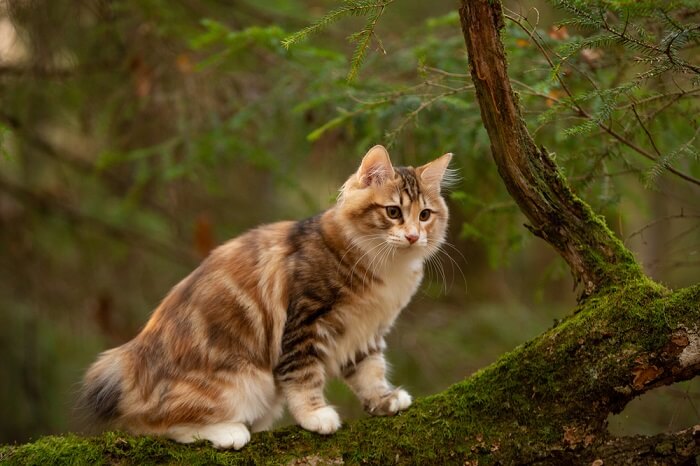
Natalia Fedosova / Shutterstock.com
This fuzzy, playful Russian cat with stubby tails – each of which is unique to each cat, like a snowflake – makes a great pet. The Kurilian Bobtail – native to Russia’s Kamchatka Peninsula and nearby islands – is a natural cat breed that developed over time, rather than resulting from selective breeding by humans.
The Kurilian Bobtail’s body is muscular and has an ultra-short, pom-pom-like tail and soft, silky fur either short or medium in length. Each cat’s one-of-a-kind tail is either stiff or flexible, and either straight or kinked. The Kurilian Bobtail is known for being playful and intelligent, and they get along well with other pets and children. This could be the purrfect cat for your family!
